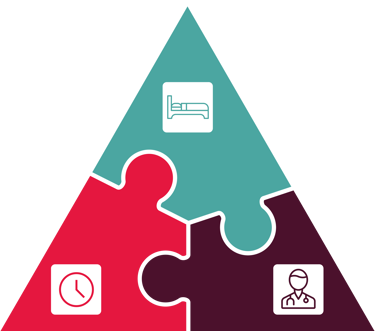Patients
- Heightened satisfaction, quality of life, and greater independence by enabling individuals to recover in the comfort of their own homes.
- Able to receive care from a dedicated team of healthcare professionals all hours of the day, without delay.
- Reduced risk of infection and readmission to hospital.
- Empowers individuals to manage their own health and increases their confidence in using technology.
- Data-reliant integrated care systems enable patients to be discharged from a virtual ward within minutes.

 AU & NZ
AU & NZ
 SG
SG
 MY
MY
 US
US
 IE
IE












